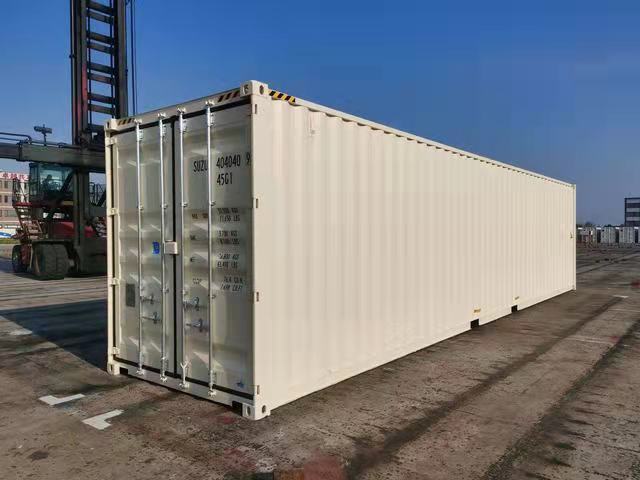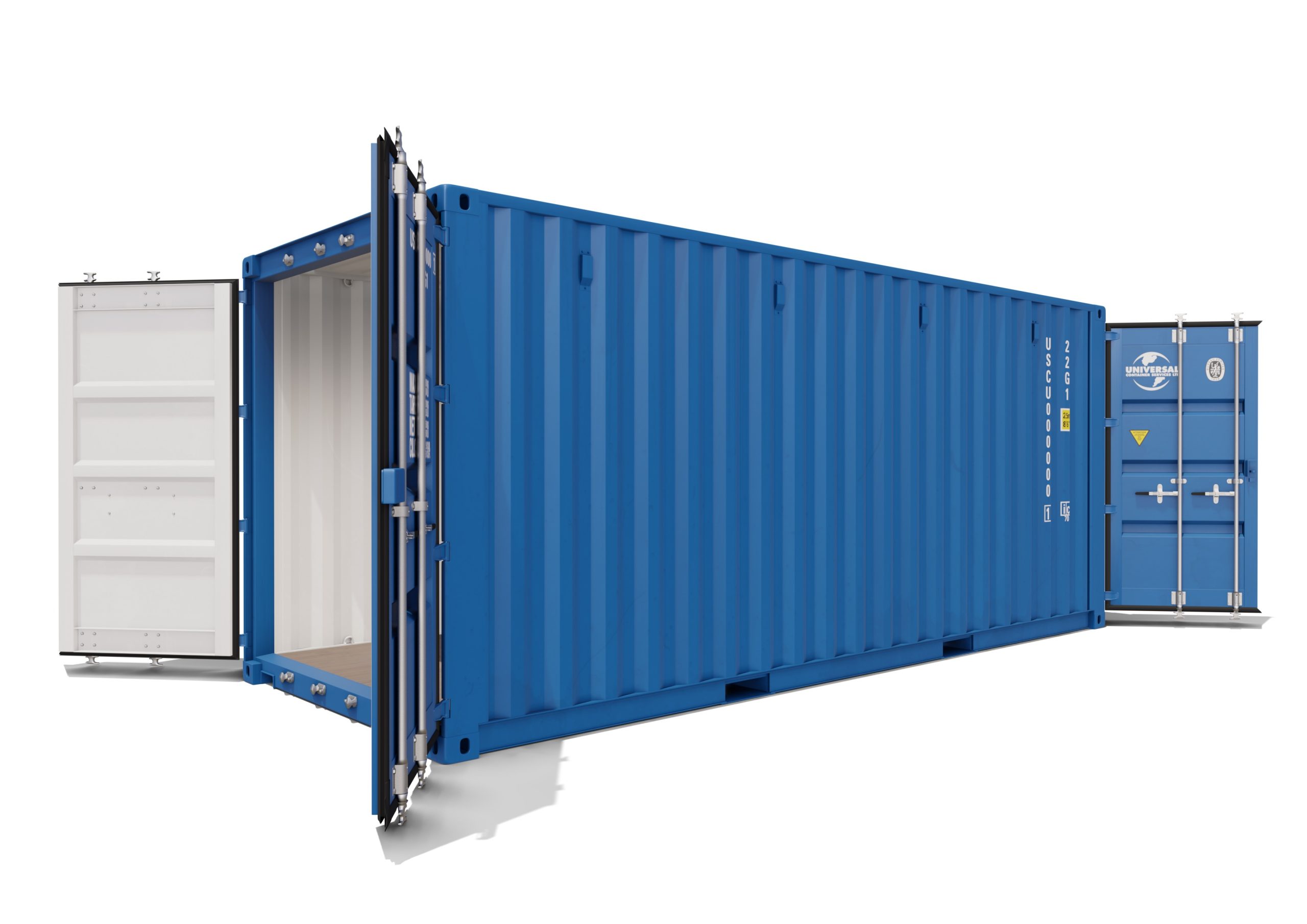How to Rent New Shipping Container 40 x 8 x 9.6 and Reduce Your Environmental Footprint
How to Rent New Shipping Container 40 x 8 x 9.6 and Reduce Your Environmental Footprint
Blog Article
The Ultimate Overview to Choosing the Right Delivery Container for Your Demands
When it involves selecting the right delivery container, comprehending your certain demands is essential. You'll intend to take into account aspects like dimension, kind, and product to assure you make the very best option. From common dimensions to specialized alternatives, there's a whole lot to explore. Plus, budgeting for both the container and any kind of alterations can make a large difference. Allow's break down the key facets to help you discover the excellent fit for your needs.
Understanding Shipping Container Sizes
When you're picking a shipping container, recognizing the numerous dimensions readily available is critical for making the ideal choice. Shipping containers commonly are available in common sizes of 20 and 40 feet, but you'll also find other dimensions. Recognizing the size you require relies on what you prepare to shop or transport.If you're moving smaller sized things, a 20-foot container could be excellent, while bigger shipments commonly require a 40-foot container. The elevation can additionally vary; high cube containers provide extra upright room, which can be valuable for taller goods.Before making a decision, measure your cargo, and take into consideration exactly how much space you'll require for packing and discharging. Always factor in prospective future demands-- selecting a slightly larger container might save you hassle down the line. Inevitably, choosing the ideal size will certainly enhance performance and ensure your things are safe during transportation
Sorts Of Delivery Containers Available
There are numerous sorts of delivery containers offered, each designed for certain objectives and cargo requirements. The typical dry container is functional, perfect for general freight. If you're delivering subject to spoiling products, consider a cooled container, which keeps a regulated temperature. For large items, high cube containers supply additional height, suiting taller loads.If you require to transfer heavy machinery or devices, level shelf containers offer a strong base without wall surfaces. Meanwhile, open-top containers permit simple loading of tall cargo, with a removable tarpaulin covering for defense. If you're trying to find adaptability, think about a collapsible container that can be conveniently stored when not in use.Lastly, specialized containers like storage tank containers are used for fluids, while vented containers are developed for bulk freight that needs ventilation. Recognizing your freight type will assist you pick the appropriate container to meet your shipping needs effectively.
Product Factors To Consider for Resilience
When choosing a shipping container, the material plays a crucial function in its longevity. You'll want to weigh the benefits of steel versus aluminum, specifically regarding corrosion resistance. Understanding these factors can help you make a more informed choice for your delivery needs.
Steel vs. Aluminum Containers
Exactly how do you choose in between steel and light weight aluminum containers for your delivery requires? Start by considering resilience. Steel containers are robust and offer superb strength, making them perfect for heavy lots and rough problems. They stand up to damages from effects and are commonly less costly, which can be a major aspect for budget-conscious buyers.On the other hand, aluminum containers are light-weight, which can conserve you on delivery expenses. They're much easier to maneuver and are a terrific choice if you require to move items often. However, light weight aluminum is typically extra pricey and less durable than steel. Consider your particular needs carefully, consisting of weight, expense, and the sort of cargo you'll be delivery, to make the right selection for your circumstance.
Corrosion Resistance Variables
Choosing the best material does not simply include weight and price; corrosion resistance plays a significant duty in durability. When choosing a delivery container, think about the setting it'll face. Steel containers, while solid, can corrosion if not effectively treated. Search for alternatives with protective finishes or galvanization to enhance their life expectancy. Aluminum, on the various other hand, offers natural rust resistance, making it ideal for coastal locations or moist conditions. It can be more expensive. Furthermore, analyze the container's use-- if it'll be exposed to chemicals or severe weather condition, focus on products that can endure these problems. Purchasing a corrosion-resistant container currently can conserve you from expensive fixings or replacements down the line. Select sensibly for lasting advantages.
Modifications and Personalization Options
Delivering containers aren't simply for carrying products; they can be changed to satisfy your particular needs via various adjustments and modification alternatives. You can convert a typical container right into a cozy office, a momentary retail store, or perhaps a personal fitness center. The possibilities are virtually endless.Think regarding adding windows, insulation, or air flow to enhance comfort. You might additionally think about electrical circuitry, plumbing, or even personalized shelving to enhance functionality. If safety and security's a concern, enhanced locks can offer peace of mind.For visual charm, you can repaint the container or include an one-of-a-kind layout to make it stand apart. Do not neglect concerning check out here floor covering alternatives-- whether you want durable plywood or something much more sophisticated, it can elevate the space.Ultimately, tailoring your shipping container to suit your demands can improve use and create an unique atmosphere that reflects your style.
Assessing Your Transport Demands
When it concerns using your modified delivery container, understanding your transportation requires is vital. Begin by establishing what you'll be shipping-- whether it's heavy devices, retail items, or individual things. Each type of freight has various needs concerning dimension, weight, and accessibility.Next, consider the range and setting of transportation. Are you shipping in your area, country wide, or worldwide? This impacts the container's design and capability. If you're making use of vehicles, assure your container fits basic dimensions for easy loading and unloading.Additionally, believe about transportation problems. Will your things need special protection from weather condition or temperature level variations? If so, you may require insulation or air flow features in your container.Lastly, assess just how frequently you'll be transferring products. Constant shipments might call for a more sturdy and flexible container to meet ongoing needs. By dealing with these aspects, you'll be well-prepared to choose the ideal shipping container for your demands.
Budgeting for Your Delivery Container
Establishing a budget for your delivery container is crucial for ensuring a smooth purchasing process. Determine how much you can pay for to invest. Bear in mind that costs can differ substantially based upon size, problem, and kind. New containers usually set you back a lot more, but utilized ones can provide significant savings.Next, take into consideration any added prices you could sustain, such as transport costs, shipment fees, and alterations. If you intend to personalize the container, consider those expenses too. Study different vendors to compare rates and discover the finest deal that satisfies your needs.Don' t neglect to include any type of licenses or guidelines that may apply to your purchase and use of the container. By plainly describing your spending plan, you'll be better prepared to make enlightened decisions, guaranteeing you get the appropriate container without breaking the financial institution.
Maintenance and Take Care Of Long life
To guarantee your delivery container lasts for many years, normal maintenance is vital. Start by evaluating the exterior for rust, damages, and damage. If you detect any kind of concerns, resolve them promptly to prevent additional damage. Tidy the container periodically, both throughout, to get rid of dust, debris, and wetness that can result in corrosion.Ensure the doors secure appropriately and lube the hinges to prevent rust and sticking. If you're using the container for storage, think about including air flow to minimize moisture and mold and mildew growth. For additional security, use a rust-inhibiting paint or sealant annually.If your container's located in a rough environment, like seaside areas, you could require to raise upkeep regularity. Keep an eye on the flooring, also; any type of signs of wear must be fixed right away. With these basic actions, you'll expand the life of your delivery container significantly.
Often Asked Inquiries
Just how Do I Discover a Reliable Shipping Container Vendor?
To find a trusted delivery container provider, start by looking into online testimonials, requesting referrals from friends or market calls, and contrasting prices. Constantly inspect their credentials and guarantee they provide quality containers look at this web-site that meet your requirements.

Can I Rental Fee a Delivery Container Instead of Buying?
Yes, you can absolutely lease a delivery container as opposed to getting one. Lots of distributors use rental options, which can save you money and supply versatility if you just require it for a short duration.
What Permits Are Needed for Container Placement?

Are Shipping Containers Weatherproof and Ideal for Outdoor Storage?
Yes, delivering containers are normally weatherproof, made to withstand severe problems. Their robust construction maintains your things secure and completely dry, making them suitable for outside storage space. Just guarantee proper ventilation to stop moisture buildup inside.
How Do I Transport a Shipping Container As Soon As Acquired?

Report this page